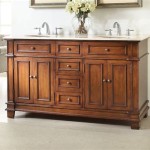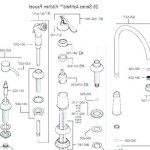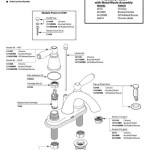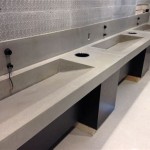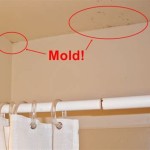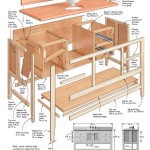How Do You Stop Mold In A Bathroom Without Fan Control
Bathrooms, by nature, are prone to mold growth due to high humidity levels. Without proper ventilation, such as a functioning exhaust fan, controlling moisture and preventing mold becomes more challenging but not impossible. This article outlines effective strategies for mold prevention in bathrooms lacking fan control.
Key Strategies for Mold Prevention in Bathrooms Without Fan Control
Several methods can be employed to mitigate mold growth in bathrooms without relying on an exhaust fan. These include:
1.
Maximize Natural Ventilation:
Opening windows and doors during and after showers and baths allows fresh air to circulate, reducing humidity levels. This simple act can significantly decrease moisture buildup, a key factor in mold growth. Even cracking a window can make a noticeable difference.2.
Dehumidify Regularly:
Using a dehumidifier is a highly effective method for removing excess moisture from the air. A portable dehumidifier can be placed in the bathroom during and after showers, or a whole-house dehumidifier can be utilized for overall moisture control. Pay close attention to the dehumidifier's water collection tank and empty it regularly to ensure optimal performance.3.
Wipe Down Surfaces:
After showering or bathing, wiping down wet surfaces like walls, shower doors, and the floor with a towel or squeegee removes standing water that can encourage mold growth. This practice is especially important in areas with poor ventilation.4.
Control the Source of Moisture:
Leaking pipes, faucets, and showerheads contribute to excess moisture. Regularly inspect plumbing fixtures for leaks and repair them promptly. Ensure proper caulking around sinks, tubs, and showers to prevent water seepage into walls and floors where mold can thrive unseen.Improving Air Circulation and Reducing Humidity
Beyond basic ventilation practices, other strategies can improve air circulation and reduce humidity. Implementing these can further inhibit mold growth.
1.
Use Hygroscopic Bath Mats:
Opt for bath mats made from materials like diatomaceous earth or microfiber, which absorb water more effectively than traditional cotton mats. This helps prevent standing water on the bathroom floor. Allowing mats to dry fully between uses further reduces the chance of mold formation.2.
Keep the Door Open:
When the bathroom is not in use, keeping the door open promotes air circulation with the rest of the house, helping to regulate humidity. This is especially beneficial in smaller bathrooms where moisture can quickly build up.3.
Consider an Air Purifier:
While not a substitute for ventilation, an air purifier with a HEPA filter can help remove mold spores from the air, mitigating the risk of further spread. This is particularly useful for individuals sensitive to mold.Preventing Mold Growth on Bathroom Surfaces
Taking preventative measures to protect surfaces prone to mold can further minimize the risk. These include:
1.
Regular Cleaning with Mold-Inhibiting Products:
Regularly cleaning bathroom surfaces with a cleaning solution containing bleach or other mold-inhibiting agents can effectively kill existing mold spores and prevent future growth. Always follow product instructions carefully and wear appropriate protective gear.2.
Apply Mold-Resistant Paint:
Using mold-resistant paint in bathrooms creates a surface less hospitable to mold growth. While not a foolproof solution, it can offer an added layer of protection, especially in areas prone to high humidity.3.
Properly Store Towels and Other Textiles:
Ensure towels and other textiles are hung to dry properly after use. Avoid leaving damp towels on the floor or in hampers, as this creates a breeding ground for mold. Launder towels frequently to remove any lingering spores.Addressing Existing Mold Issues
If mold is already present, addressing it quickly and effectively is crucial.
1.
Identify and Remove Mold:
Small areas of surface mold can often be cleaned with a solution of bleach and water or a commercial mold cleaner. For larger infestations, or mold that has penetrated porous materials, professional mold remediation may be necessary.2.
Address Underlying Moisture Problems:
Simply cleaning visible mold won't solve the problem if the underlying moisture issue persists. It is essential to identify and address any leaks, plumbing issues, or structural problems contributing to the moisture buildup.3.
Monitor for Recurrence:
After cleaning or remediation, regularly monitor the area for signs of mold recurrence. Implement the preventative measures outlined above to minimize the risk of future growth.By implementing these strategies, maintaining a mold-free bathroom environment is achievable, even without the assistance of a bathroom exhaust fan.

How To Prevent Mold In A Bathroom Without Fan Home Efficiency Guide

Ways To Prevent Mold In Bathrooms Forbes Home

How To Prevent Bathroom Mold From Taking Over Allergy Air

Long Term Bathroom Mold Prevention Environix

How To Stop Mould In The Bathroom Victoriaplum Com

Long Term Bathroom Mold Prevention Environix

Bathroom Ceiling Mold Removal When To Clean Call Branch Environmental

Bathroom Mold How To Identify And Get Rid Of In Environix

Tips How To Prevent Mold And Mildew Happy Hiller

Long Term Bathroom Mold Prevention Environix
Related Posts

